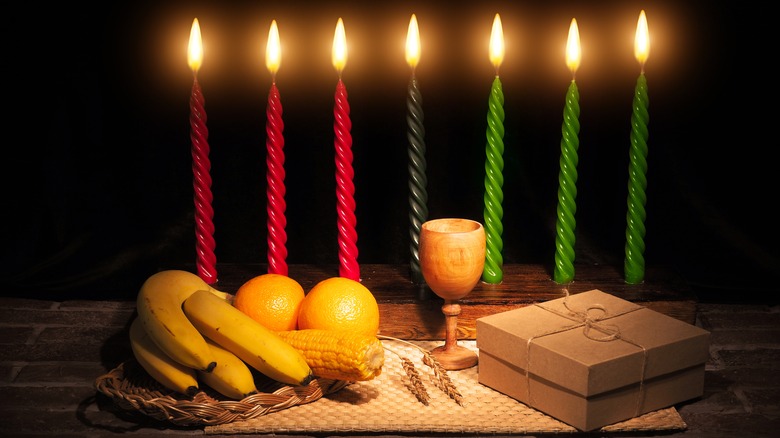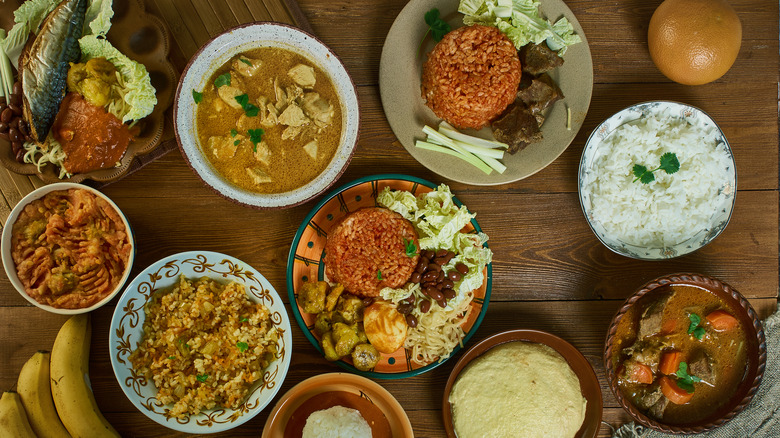The Symbolic Foods Of Kwanzaa
Kwanzaa is a secular holiday that honors African heritage and is celebrated at the end of every calendar year. It was created by professor Maulana Karenga during the Black Power Movement in 1966 as a way to empower African Americans and to honor their history. The seven-day Kwanzaa celebration begins on December 26 and culminates in a feast on the evening of the sixth night, December 31. The feast is called Karamu Ya Imani, which translates from Swahili to mean "feast of faith."
Food is key to the Kwanzaa table, of course, but so are the seven symbols. Five of them are objects including Mkeka (the mat representing the foundation), Kinara (the candle holder representing ancestors), Mishumaa (the seven red, black, and green candles), Kikombe cha Umoja (the unity cup), and Zawadi (gifts for the children of the family).
The remaining two symbols are foods — Mazao (fruits of an abundant harvest) and Muhindi (ears of corn symbolizing the potential of the children). Mazao can be represented by any variety of vegetables, fruits, and nuts. All of these items come together to show the trials of the past and hope for the future for all those celebrating.
Just like with any food-centric holiday, traditions vary from family to family, but it is common for the centerpiece at the Karamu feast to be a one-pot dish. The spread commonly includes African foods, especially from the East and West, but also includes dishes from important places in the African diaspora including the American South, the Caribbean, and the Atlantic coast of South America.
Some of the foods served during Kwanzaa
Some of the iconic Ghanaian dishes that may be found at a traditional Kwanzaa meal include red red, a creamy groundnut stew made with peanuts or black-eyed peas cooked in tomato and palm oil. You might also find other stews like gumbo, collard greens, West Indian curries, or Brazilian feijoada. Different versions of seasoned jollof rice like Senegalese thieboudienne served with smoked fish might make up a starchy component, but so can jambalaya, baked candied yams, buttermilk biscuits, macaroni and cheese, cassava (yucca), plantains, fried okra, or Ethiopian injera.
The Karamu feast can also include spicy jerk chicken, southern fried chicken, or black-eyed pea fritters called akra, acra, accra, acrat, or acarajé — there are versions from many different countries like Senegal, Brazil, and Haiti. For dessert, the Mazao fruits may make an appearance in a fruit salad, and you might also sample sweet potato pie, coconut pound cake, or peach cobbler.
The Kwanzaa table has come to hold a diverse array of foods that represent throughlines to the African slave trade that have influenced the cuisine over time. While it may be emblematic of a deeply troubled history, these culinary traditions also are a powerful testament to strength, survival, and ingenuity. The colors of the candles of Kwanzaa capture this sentiment as well — "black for the people, red for their struggle, and green for the future" (via Ujamaa Place).


